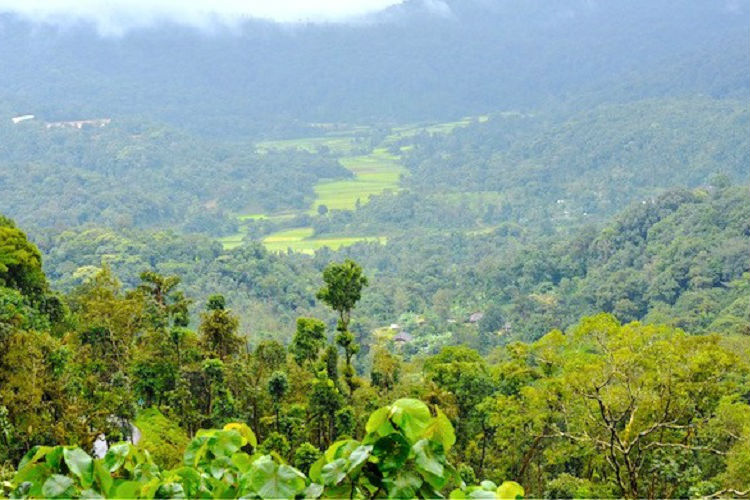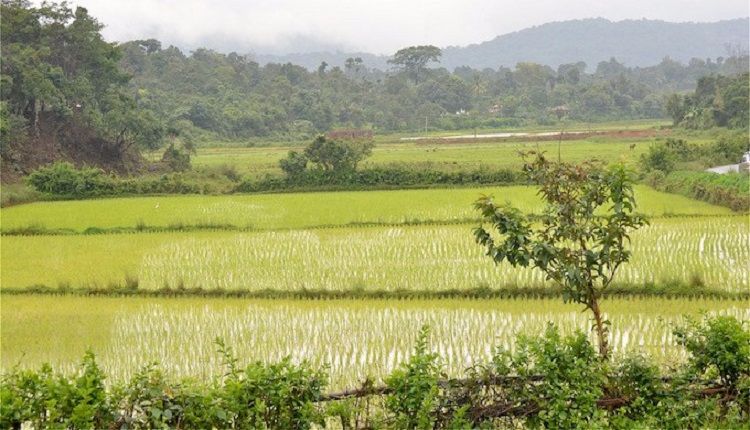The famed Kodagu coffee estates are experimenting with bee farms to add to incomes so that the forested landscape of this biodiversity hotspot is better able to sequester carbon.

While honey can sweeten coffee for the drinker, coffee farmers of Kodagu district of Karnataka are realising that raising bees for honey in the farms can sweeten their economic returns. It is one of the innovative methods being tried out in the district to provide additional financial incentives to coffee farmers so that they conserve the landscape they have inherited.
The concept of payment for ecosystem services (PES) is evolving from eco-certified coffee to that of landscape labelling of Kodagu. If the forests, coffee agro-forestry, rice fields, sacred groves, rivers and streams of Kodagu together provide ecosystem services and climate resilience to the communities living in the hills and the plains, why should not there be payment for sustaining these services?
According to a report on PES prepared by the College of Forestry at Ponnampet, Kodagu, the district has been identified as a micro-hotspot of biodiversity under the larger Western Ghats region. There is tree cover across as much as 81% of the district.
Natural forest ecosystems cover an area of 46% of the total area of the district. This includes evergreen, semi-evergreen, moist deciduous, dry deciduous and scrub forest types. Evergreen forests also include the high-altitude shola forests along with grasslands.
Key ecosystem services
Biodiversity, carbon sequestration and water regulation are the key ecosystem services from the Kodagu landscape. In addition to the economic benefit, there are also provisional, regulating, cultural and supporting services from the landscape. Thus, while eco-certification of coffee can help individual farmers, landscape labelling can benefit the district in its entirety, giving incentive to the communities to plan their development sustainably.
Charulata Somal, chief executive officer of the Kodagu Zilla Panchayat (district council), says that if PES can help channel money for the communities to conserve their landscape, there is a possibility of meeting the genuine aspirations of the people without compromising on the environment. “We plan to take the concept of PES through the elected representatives from the district.”
The PES report from the College of Forestry estimates the economic value of the various ecosystem services in Kodagu. The nutrient recycled has a value between INR 237 and INR 1167 per hectare, with a mean value of INR 700 per ha. The economic value of timber is between INR 530 and INR 8340 per ha. The recreational value of biodiversity is estimated as INR 27,000 per ha.
High sequestration
Carbon sequestration, according to the report, varies from 77 tonnes per ha to 207 tonnes per ha. Even at 90 tonnes per ha and an assumed price for carbon at USD 10 per tonne, the economic valuation is INR 40,500 per hectare.
The project for promoting bee farming (apiculture) in coffee estates was started after a study found the strong economic impact of pollination services of bees from sacred groves adjacent to the coffee farms. Kodagu has 1,214 sacred groves under community management, covering 2,550 hectares interspersed with coffee estates.

While Arabica coffee is self-pollinated, Robusta is cross-pollinated. “We researched the interaction between bees in the sacred groves and Robusta coffee to understand what the pollination impact is,” said C.G. Kushalappa, university head for forestry and environment sciences at the College of Forestry in Ponnampet. “Our research proved that in Robusta close to 31% of productivity could be increased if there is sufficient population of honeybees around the farm.”
This research, implemented by the College of Forestry under the Managing Trade-Offs in Coffee Agroforestry (MOCA) project in partnership with ETH University at Zurich, Switzerland, opened the possibility of increasing income for coffee farmers by integrating apiculture into coffee systems.
A premium for honey
“Kodagu honey has a premium in the market because it comes from the flowers of multiple species,” said R.N. Kencharaddi, assistant professor of agricultural entomology at the College of Forestry. “Honey collected from bee keeping in coffee agro-forestry system can get the premium price.”
The college introduced bee boxes in 40 farmers’ fields in 2015 at a density of four to five colonies (bee boxes) per acre, so that they can grow their own bees and produce honey. The team has been researching to select bee colonies that have the most desirable traits for propagation.
“We are looking for bees that do not abscond from their colonies and do not divide into new colonies before the hive is fully built,” said Kencharaddi. “We also check whether the bees are efficient at collecting honey and have disease resistance. Most important, we check on their ferocity, for we do not want the bees to attack the farmers.”
Apis cerana indica or the Indian honeybee is the species that the college is using for propagation. Though the college has not yet done any research on the subject, beehives have been successfully used in East Africa to protect farms from ravaging elephant herds. If this is experimented with and found successful then it could also serve as an additional benefit for Kodagu farmers, who are tired of elephant herds destroying their crops.
“There are elephant herds in Kodagu in which calves and young adults have not seen the forests,” explained M.C. Cushalappa, a coffee farmer from Siddhapura. “These herds have moved out of natural forests years ago and not returned since. They move from farms to villages, without returning to their natural habitat.”
The species of bees used in East Africa and that used in Kodagu are different, according to Kencharaddi. The specie of the African bees that scare elephants is Apis mellifera caucasica, which are more ferocious than their Indian counterparts. The African bees also come out during the night, whereas the ones that the college is working with are active only during daylight.
With bees feeding on the flowers of multiple trees to give premium quality honey, there would be a greater incentive for coffee farmers for protecting their landscape, according to Kushalappa. “This is how we are evolving into the concept of getting landscape labelling for produce from Kodagu’s coffee agro-forestry systems — coffee, honey, pepper and cardamom. Once we can get a brand presence for the Kodagu landscape, the farmers can market multiple produce. Depending on the prices the farmer can move the appropriate produce to the market.”
With the CEO of the Kodagu Zilla Panchayat committing to get elected representatives oriented to the concept of PES and landscape labelling, this method of promoting produce from Kodagu even while conserving the environment is likely to grow wings in near future. Honey with coffee could become the trigger for this.
(This piece was originally published on India Climate Dialogue and has been reproduced here with permission.)
source: http://www.thenewsminute.com / The News Minute / Home / by S. Gopikrishna Warrier / Monday -November 07th, 2016

